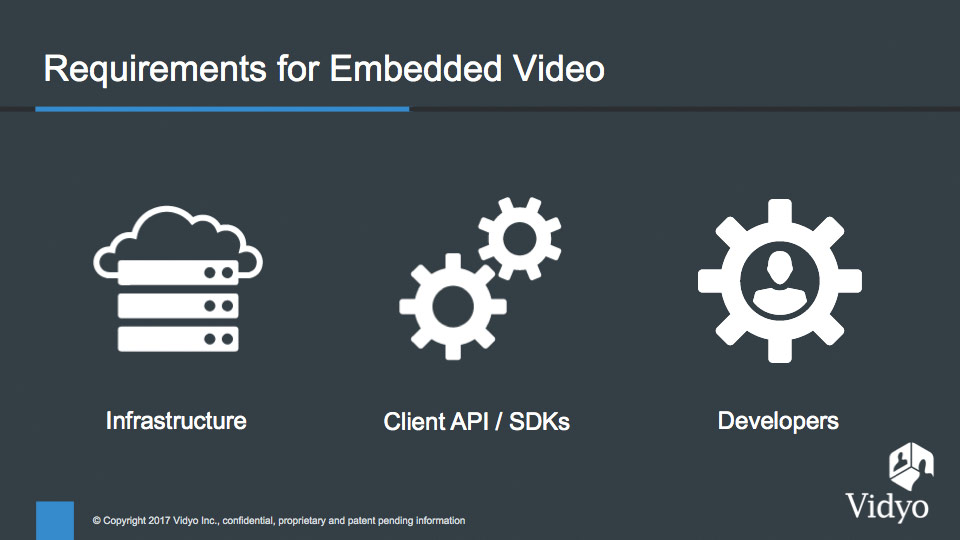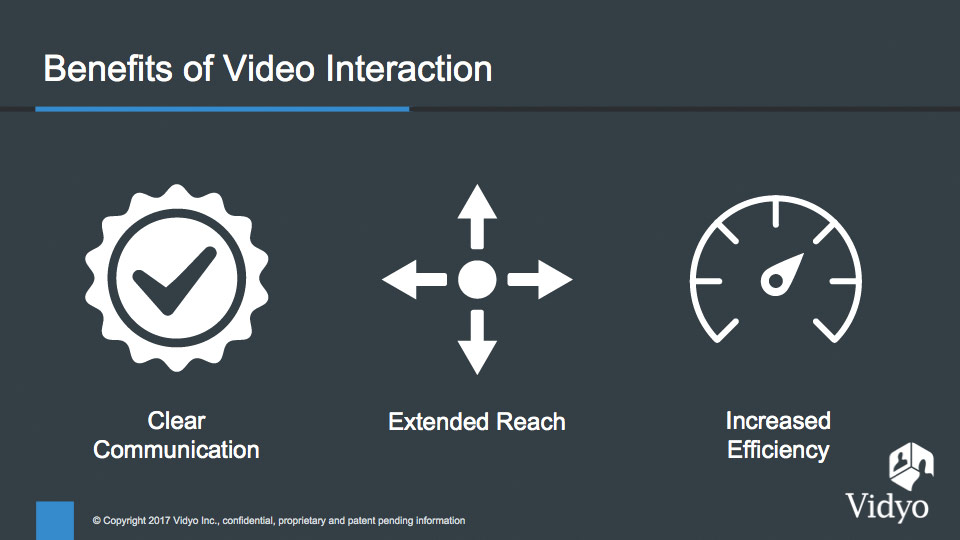Vidyo recently hosted its first inaugural Vidyo Healthcare Summit in Nashville, TN. Many leaders in telemedicine attended, sharing their experiences and best practices with the broader community. It was truly inspiring to see the leaders who are saving lives every day using telemedicine. It was also really exciting to know that Vidyo is part of these life saving telemedicine programs.
During the Vidyo Healthcare Summit I gave a presentation titled “Using Vidyo.io to Fast Track Your Consumer Facing Apps.” In this presentation I covered several things you should consider prior to building embedded video into a telemedicine app . I also explained how, with vidyo.io, you can streamline the process of integrating video interactions into a telemedicine app.
It’s often difficult to cover such a deep topic in a short period of time, so I wanted to expand upon my presentation below.

What is embedded video?
Embedded video is the process of adding a video conference capability directly into a third party app or workflow. A developer uses APIs and SDKs to integrate the video conferencing portion of the app into the rest of the app. With embedded video you aren’t simply launching a video conferencing client from your telemedicine app. Instead you embed video directly into the app workflow, providing a seamless experience. Embedded video makes it possible for both providers and patients to stay within the telemedicine application without switching between apps, thereby avoiding a disjointed user experience.
Check out our embedded video research report to learn more.

Benefits of embedded video
Embedded video provides a number of advantages for provider to patient interactions:
- Clear communication – Video interactions dramatically improve communications between people. Much of the communication between people goes beyond simply speaking. People in a video call can see body language, facial expressions, and a host of other non-verbal cues that people use every day in face-to-face communications. Using video, these cues don’t get lost as they do in voice only or text-based communications. Video communication dramatically improves the clarity of communications and also dramatically improves empathy.
- Extended reach – Embedded video dramatically improves the geographic reach of your telemedicine application in two ways. Most obviously it allows providers to extend care outside the boundaries of the physical clinic. Care can be provided to patients who are in-home and possibly located where appropriate medical care is not readily available. The second way that embedded video extends reach is by opening up access to providers. The provider can be located virtually anywhere, allowing healthcare organizations to draw from a broader talent pool. Video also provides flexibility for providers, allowing them to deliver care from home or elsewhere else. This improves their work-life balance, resulting in increased employee retention.
- Improved efficiency – Finally, another important benefit of embedded video is efficiency. The time required to move patients in and out of exam rooms, and ensuring the providers stay coordinated has a measurable cost. With embedded video providers can meet with patients while working from their desks. Moving from patient to patient is as easy to clicking a button. Patients prefer this approach, since they can have the appointment from the comfort of home.
Stay tuned for part 2 in this blog series where we’ll cover key considerations to keep in mind as you plan your telemedicine app.
Check out our embedded video research report to learn more.
Recent Comments